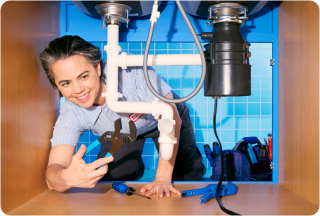Did you know your hot water pipes radiate a lot of heat that can add unnecessary heating costs to your energy bills? A great solution is to insulate your pipes to reduce heat loss and raise the temperature of the water by two to four degrees Fahrenheit. That means you won’t have to wait as long for your water to get hot, and you’ll be conserving water and energy while saving money.
Follow this pipe insulation guide so you can learn how to insulate water pipes yourself to prepare your house for the winter.
Before you begin pipe insulation
- Check your owner's manual for the required clearance from the water heater and its flue vent. Certain types of foam pipe insulation could emit toxic gases if they burn.
- Determine the type of insulation to use. For electric hot water heater insulation, pipe sleeves made with polyethylene or neoprene foam are the most commonly used. The safest and best pipe insulation for gas heaters is fiberglass pipe wrap if your pipes are within eight inches from the flue.
- Measure the diameter. Plumbing pipe is measured by its internal diameter (3/4 inch is common), but the actual outside diameter will be larger, depending on the material.
What you need:
- Tape measure
- Foam pipe covers or strips of fiberglass pipe wrap from your hardware store
- Pipe insulation tape (acrylic or duct tape) or cable ties to secure the pipe sleeves or aluminum foil tape or wire to secure the pipe sleeves or aluminum foil tape or wire to secure the fiberglass pipe wrap
- Gloves, long sleeves and pants if using fiberglass pipe wrap
- Scissors, box cutter, or utility knife




